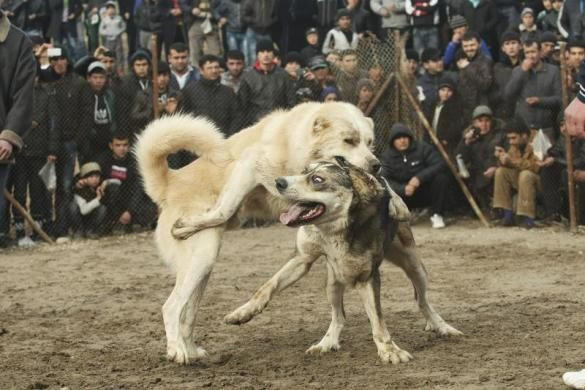March Madness Science, From Basketball To Animal Fights

March Madness kicks off this Sunday when the sages of the NCAA announce the lineups and seeds for the college basketball championship tournament. Maybe you'll fill out your bracket with your favorite teams out of a sense of loyalty. But for those of you out to win your office pool, you're better off using a more calculating method of bracketology.
The science of March Madness brackets isn’t necessarily an arcane mess of equations. Sheldon Jacobson, a computer scientist at the University of Illinois Champaign-Urbana, thinks that you don’t even really need to comb through a team’s stats and performance in the regular season to fill out your bracket. He prefers to look at the way the teams are seeded and thereby calculating their odds of advancing.
This doesn’t mean that you should just pick the top-seeded team in every division – the Final Four are actually seven times more likely to include no No. 1 seed than all No. 1 seeds. Jacobson’s model, posted on his BracketOdds site, incorporates win-loss data from NCAA tournaments going back to 1985. You pick the stage of the tournament and plug in the eight seeds, and it spits out the odds of that lineup happening.
For instance, Jacobson calculates the odds of an Elite Eight with all first- and second-seeded teams are 133.5-1; three first-seeded teams, four second-seeded teams and a fourth-seeded team is slightly more likely, with odds of 93-1. But beyond the top eight, past performance tends to matter less and less.
Once the top eight teams are set, "you might as well flip a coin," Jacobson told Discovery magazine in 2012.
If sports isn’t exactly your thing, but you still want to get in on office gambling, why not participate in an animal-themed March Madness tournament? Harvard scientist Katie Hinde, who studies animal lactation, is running Mammal March Madness for the second year in a row, which aims to make the fur fly by pitting mammal against mammal (with a few non-mammal wild cards in the mix too).

Since we can't actually pit these animals against each other, just how does the Mammal March Madness team calculate how the matchups will play out?
“Battle outcome is a function of the two species' attributes within the battle environment,” Hinde writes. “Attributes considered in calculating battle outcome include temperament, weaponry, armor, body mass, fight style and, for social mammals, division-group size.”
In early rounds, battles will take place in the natural environment of the better-seeded animal (true home court advantage). But starting with the quarterfinals, the matchups will take place in random environments, which could lead to some interesting upsets. A musk ox–humpback whale matchup will probably play out much differently if the two sides meet on the ocean vs. the savannah.
Battles are live-tweeted and based on scientific research, with Hinde getting assistance this year from Boston University evolutionary anatomist Kristi Lewton, Oberlin behavioral ecologist Chris Anderson, and Columbia University marine biologist Josh Drew.
On Tuesday night, the first round of competition took place in the Social Mammals bracket. Hyenas prevailed over titi monkeys, while mandrills beat jackals; the musk oxen stomped on the hyrax, while Ethiopian wolves tore through bush dogs; hamadryas baboons advanced over the meerkats, and the Tibetan macaque made mincemeat of beavers. In a surprise defeat, upstart army ants overwhelmed their dingo opponents.
Army ants defeat Dingos. I for one welcome our new insect overlords (http://t.co/zY1oBYfjRC) #2014MMM
- Dr. Wrasse (@labroides) March 12, 2014Tonight, Mammal March Madness continues with the marine division. Will the manatee be able to hold its own against the polar bear? Who’ll win the closely matched beluga whale–sea lion bout? Any chance that the last-ranked sea otter might be able to upset the top-seeded orca? You can follow the action starting tonight at 8 p.m. ET, under the Twitter hashtag #2014 MMM.
© Copyright IBTimes 2025. All rights reserved.





















